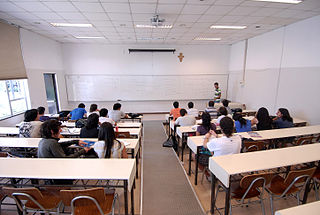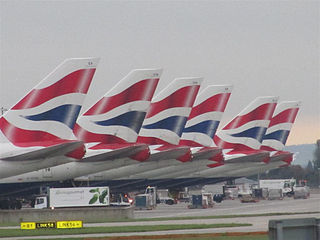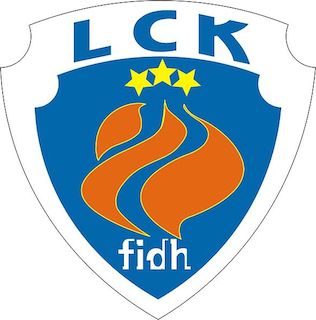
The European Convention on Human Rights is an international convention to protect human rights and political freedoms in Europe. Drafted in 1950 by the then newly formed Council of Europe, the convention entered into force on 3 September 1953. All Council of Europe member states are party to the convention and new members are expected to ratify the convention at the earliest opportunity.

The European Court of Human Rights (ECtHR), also known as the Strasbourg Court, is an international court of the Council of Europe which interprets the European Convention on Human Rights (ECHR). The court hears applications alleging that a contracting state has breached one or more of the human rights enumerated in the convention or its optional protocols to which a member state is a party. The court is based in Strasbourg, France.

The Welfare Party was an Islamist political party in Turkey. It was founded by Ali Türkmen, Ahmet Tekdal, and Necmettin Erbakan in Ankara in 1983 as heir to two earlier parties, National Order Party (MNP) and National Salvation Party (MSP), which were banned from politics. The RP participated in mayoral elections at that time and won in three cities Konya, Şanlıurfa, and Van. Their vote percentage was approximately 5%.

Secular education is a system of public education in countries with a secular government or separation between religion and state.
Loizidou v. Turkey is a landmark legal case regarding the rights of refugees wishing to return to their former homes and properties.

Eweida v United Kingdom[2013] ECHR 37 is a UK labour law decision of the European Court of Human Rights, concerning the duty of the government of the United Kingdom to protect the religious rights of individuals under the European Convention on Human Rights. The European Court found that the British government had failed to protect the complainant's right to manifest her religion, in breach of Article 9 of the European Convention. For failing to protect her rights, the British government was found liable to pay non-pecuniary damages of €2,000, along with a costs award of €30,000.
The Church of Scientology Moscow v Russia [2007] ECHR 258 is a European Court of Human Rights case, concerning Article 11 of the convention. In the case the European Court of Human Rights in Strasbourg condemned Moscow City Government's refusal to consider the Church of Scientology of Moscow for registration as a religious organisation, and as a result found that Russia had violated the rights of the Church of Scientology under Articles 11 when "read in the light of Article 9". Specifically, the Court determined that, in denying consideration of registration to the Church of Scientology of Moscow, the Moscow authorities "did not act in good faith and neglected their duty of neutrality and impartiality vis-à-vis the applicant's religious community". The Court also awarded the Church €10,000 in respect of non-pecuniary damage and €15,000 for costs and expenses.
The margin of appreciation is a legal doctrine with a wide scope in international human rights law. It was developed by the European Court of Human Rights to judge whether a state party to the European Convention on Human Rights should be sanctioned for limiting the enjoyment of rights. The doctrine allows the court to reconcile practical differences in implementing the articles of the convention. Such differences create a limited right for contracting parties "to derogate from the obligations laid down in the Convention". The doctrine also reinforces the role of the European Convention as a supervisory framework for human rights. In applying that discretion, the court's judges must take into account differences between domestic laws of the contracting parties as they relate to substance and procedure. The margin of appreciation doctrine contains concepts that are analogous to the principle of subsidiarity, which occurs in the unrelated field of EU law. The purposes of the margin of appreciation are to balance individual rights with national interests and to resolve any potential conflicts. It has been suggested that the European Court should generally refer to the State's decision, as it is an international court, instead of a bill of rights.
Article 6 of the European Convention on Human Rights is a provision of the European Convention which protects the right to a fair trial. In criminal law cases and cases to determine civil rights it protects the right to a public hearing before an independent and impartial tribunal within reasonable time, the presumption of innocence, right to silence and other minimum rights for those charged in a criminal case.
Leyla Şahin v. Turkey was a 2004 European Court of Human Rights case brought against Turkey by a medical student challenging a Turkish law which bans wearing the Islamic headscarf at universities and other educational and state institutions. The Court upheld the Turkish law by 16 votes to 1.
Mosley v United Kingdom [2011] 53 E.H.R.R. 30 was a 2011 decision in the European Court of Human Rights regarding the right to privacy under Article 8 of the European Convention on Human Rights. An application to the court was made by Max Mosley, the former president of the FIA, after his successful breach of confidence legal case against the News of the World. In that case, the court unanimously rejected the proposition that Article 8 required member states of the Council of Europe to legislate to prevent newspapers printing stories regarding individual private lives without first warning the individuals concerned. It instead held that it fell within each state's margin of appreciation to determine whether to legislate on that matter.

Latvian Human Rights Committee is a non-governmental human rights organization in Latvia. It is a member of international human rights and anti-racism NGOs FIDH, AEDH. Co-chairpersons of LHRC are Vladimir Buzayev and Natalia Yolkina. According to the authors of the study "Ethnopolitics in Latvia", former CBSS Commissioner on Democratic Institutions and Human Rights Ole Espersen "had visited LHRC various times and had used mostly the data of that organisation in his views on Latvia".
Osmanoğlu and Kocabaş v. Switzerland was a case heard by the European Court of Human Rights in a chamber judgement concerning whether mandatory mixed-gender swimming for girls against the will of their Muslim parents who objected on religious grounds violated Article 9 of the European Convention on Human Rights by contravening religious freedom. On 10 January 2017 the court unanimously found that the convention had not been violated.
E.S v. Austria was a case held before the European Court of Human Rights (ECtHR) case where the court upheld a domestic court's fine on an Austrian woman who had called Mohammed a pedophile.
Fedotova and Others v. Russia was a case submitted by six Russian nationals to the European Court of Human Rights (ECtHR).
Toplak and Mrak v. Slovenia of 26 October 2021, is the European Court of Human Rights judgment in which the court held that voters' rights were violated when they had no legal right to ask for accessible polling places in advance to achieve accessibility before the election day. The ruling is also significant because the court for the first time extended its jurisdiction to referendums.

Sargsyan v. Azerbaijan was an international human rights case regarding the rights of Armenian refugees displaced from former Soviet Azerbaijan because of the conflict in Nagorno-Karabakh. The judgment of the Grand Chamber of the European Court of Human Rights on the case originated in an application against the Republic of Azerbaijan lodged with the Court under Article 34 of the Convention for the Protection of Human Rights and Fundamental Freedoms by Minas Sargsyan on 11 August 2006. He was forced to flee his home in the village of Gulistan in Shahumyan region of former Soviet Azerbaijan, together with his family, because of the Azerbaijani bombardments of the village and was not allowed to return and unable to get any compensation from the Azerbaijani authorities. Even though the applicant died in 2009, as did his widow, Lena Sargsyan, in 2014, his children, Vladimir and Tsovinar Sargsyan, represented him in court to continue the proceedings.
The persecution of Jehovah's Witnesses in Russia refers to the Russian government's persecution of the Jehovah's Witnesses religious group. Following the collapse of the Soviet Union in 1991, Jehovah's Witnesses became legal after a long period of being banned, though have still faced widespread government interference in their activities. Jehovah's Witnesses were deported en masse to Siberia in 1951 under Stalin via Operation North.






